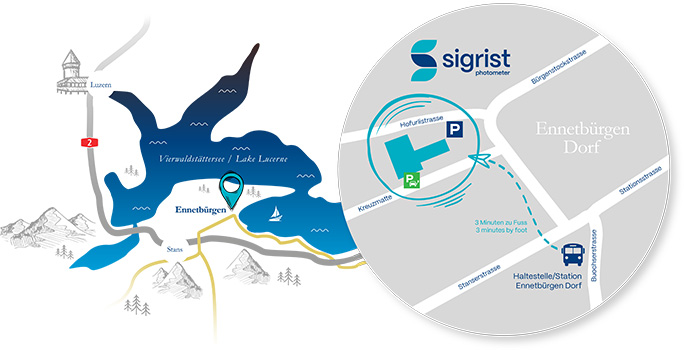Determination of the solids concentration in gases by means of scattered light measurement.
Detection of the scattered light intensity permits the measurement of low dust concentrations in air. Its practical uses include flue gas monitoring, determination of visibility in road tunnels, and the monitoring of filter installations for pollutants (insecticides, dyes, chemicals) originating from manufacturing processes. Aerosols of liquids such as oil mist in ship engine rooms are also measured this way.

Fig. 13: Dust measurement at a scatter angle of 20°
The SIGRIST dust instrument measures at a scatter angle of 20° and covers a measuring range from 0..0.1 mg/m3 to 0..1000 mg/m3 PLA.
The instruments are calibrated at site with the actual exhaust air. In this connection, it is worth noting that black and white particles scatter light equally. Particle colour

Fig. 14: Flow cell with purge air system for dust measurement
Sampling (1) is done extractively, which means the measurement takes place outside of the process and thus protected from heat, corrosion, and contamination. The flow cell is equipped with a purge air system that prevents dust from building up on the optical parts - as the above Figure illustrates. Together with the sample, the blower draws in ambient air (2) that, after being filtered and heated (3), surrounds the sample stream with a protective shroud. It is also introduced at (4) to promote flow towards the flow cell outlet. Isokinetic sample; Smoke spot number


